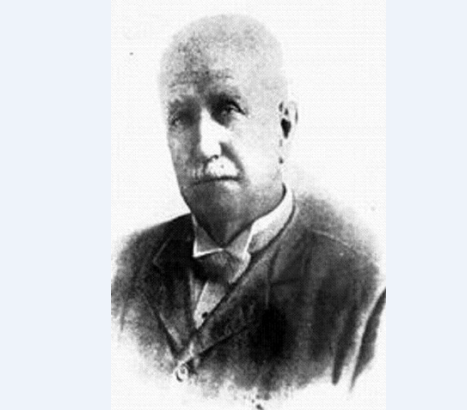Born in Southampton, a port city in southern England in 1840, Henry Lester embarked on a freighter and arrived in Shanghai, China in 1867.
Before coming to China, Lester attended university in the UK, obtaining a bachelor's degree in architecture. Afterward, he was responsible for the urban planning and construction supervision of the concession in Shanghai. Later, Smith & Co., the largest real estate developer in Shanghai, invited Lester to join as a partner.
A few years later, Smith retired and returned to the United States, with almost all of the real estate in his name transferred to young Lester. Lester thus became a real estate giant in Shanghai. British scholar Peter Hibbard once commented on Lester in his book The Bund Shanghai, China faces West: "Lester's firm not only did architectural design and construction projects but also land and real estate transactions, which created a precedent business model. Lester could be called the most successful British architect who invested in Shanghai."
Therefore, even today, we can still see his many famous works in Shanghai, such as reclaiming land from the Bund, building wharves, designing and constructing the North China Daily News Building (now Guilin Building), Shanghai Electric Power Company Building, etc.
At that time, almost all of the people in Shanghai remembered Lester because he was an unprecedented true philanthropist.
Albeit one of the richest in Shanghai at that time, he lived in the single dormitory room of the Shanghai Club. Founded in 1861, the Shanghai Club was also known as the British Club, in which all members were male. Living a very simple life, Lester was never married, without any descendants. Most of his clothes were gifts from others. Having a habit of walking or taking buses, he was a devout Christian with a lot of Puritan features.
Considering himself a Shanghainese citizen, Lester spent all wealth he acquired in Shanghai. He donated large sums of money to the Shanghai Chauffeur Gospel Association for many times during his lifetime to relieve the poor rickshaw drivers, providing them with food, clothing, accommodation, medical care, and education services free of charge.
When he passed away in 1926, the total assets of his estate were valued at 14.34 million taels, which appreciated to 20 million taels only a year later in 1927. There were even many countries with a total annual income of 10 million to 20 million taels, for which Lester could be described as being richer than a king.
According to the will made by Lester during his lifetime, The Henry Lester Trust was set up with all the properties under his name to develop the education and health cause in Shanghai. It successfully funded the Henry Lester Institute of Medical Research (the original site is now the Shanghai Institute of Pharmaceutical Industry), Henry Lester Institute of Technical Education and the Affiliated Middle School (the original site is now the Shanghai Seaman's Hospital). It also set up the Renji Hospital Building (Renji Hospital used to be named Lester Chinese Hospital) in which the poor and patients urgently in need of hospitalization were admitted free of charge and exempted from paying all fees. Located on Hongqiao Road, the Shanghai School for the Deaf and Mute was built as the largest and most well-equipped school for the disabled in China at that time. In addition, there were also many units and organizations that received designated grants by Lester's will, including St. Luke's Hospital in Hongkou, the Institution for the Chinese Blind on Yidingpan Road, and the Shanghai Mission for Ricksha Men in Hongkou, etc. Lester Trust also established several schools successfully.
Among them, having only existed for 10 years (1934-1944), the Henry Lester Institute of Technical Education has made an indelible contribution to the development of China's aviation industry, cultivating a large number of outstanding talents with practical experience. Some of them have served as Chinese Ambassador to the United Nations and President of the International Court of Justice in The Hague.
Now, The Henry Lester Trust still exists and operates normally. After the foundation of the People's Republic of China in 1949, the headquarters of The Henry Lester Trust moved from Shanghai to London, England. In recent decades, more than 400 Chinese experts and scholars have been funded by the foundation to study and research in the United Kingdom.
-Translated by Shuya Wang











